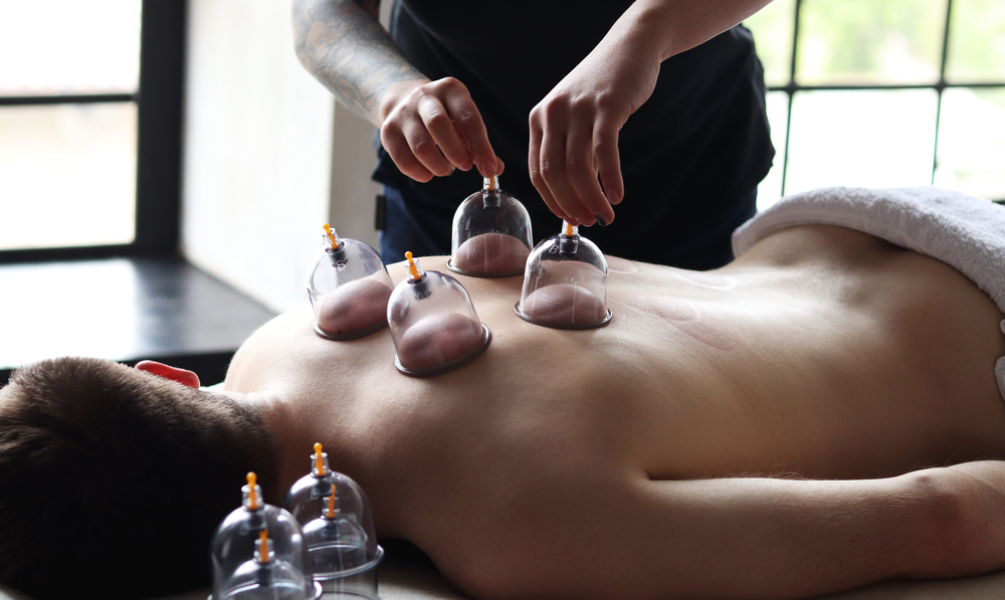Best In the Town Saloon Services
Get Your Desired Saloon Beauty service at Your Door, easy to schedule and just few clicks away.
Dry Cuping Massage

Description
Cupping therapy is an ancient healing method that may ease back pain, neck pain, headaches and other issues. It uses suction to pull on your skin and increase blood flow to the affected area. Cupping causes bruising and can lead to skin infection. There’s mixed evidence on the benefits of cupping, but the treatment risks are generally low. What is cupping therapy?Cupping therapy is an ancient healing technique that some people use to ease pain. A provider places cups on your back, stomach, arms, legs or other parts of your body.
A vacuum or suction force inside the cup pulls your skin upward.
Cupping therapy is a form of traditional medicine that originated in China and West Asia. People have practiced this method for thousands of years.
Other names for cupping therapy include cupping, cup therapy and suction cup therapy.
What does cupping therapy do?
Cupping uses suction to draw blood to or away from specific areas of your body. People mostly use cupping to relieve conditions that cause pain. Some people say it also helps with chronic (ongoing) health issues. Cupping may ease symptoms of:
Arthritis including rhematoid arthritis.
Back pain , neck pain ,knee pain and shoulder pain.
Asthama and other breathing issues.
Gastrointestinal (GI) disorders like irritable blood dieases (IBD).
Headaches and migranies
High Blood pressure (hypertension).
AED140.00
60mins
Dry Cupping Therapy at Home – Traditional healing technique for pain relief and detox, performed by certified therapists in your home.
Frequently Asked Questions
Dry cupping massage involves placing specially designed suction cups on the skin to create negative pressure, which helps lift soft tissues, increase blood flow, and relieve muscle tension without any incisions or bloodletting.
Dry cupping uses suction alone, whereas wet cupping (Hijama) involves controlled minor skin incisions to draw out a small amount of blood along with the suction treatment.
It is commonly used to alleviate muscle pain, reduce inflammation, improve circulation, and assist in the treatment of conditions like back pain, neck tension, and sports injuries.
A therapist applies cups—made of glass, silicone, or plastic—to specific areas on the body. Suction is created either by a pump or by heating the cup briefly before placement.
Common areas include the back, shoulders, neck, and limbs. The treatment is often customized depending on the location of tension and the client's specific needs.
Sessions usually last between 15 to 30 minutes, although the duration may vary based on the treatment protocol and individual client requirements.
The sensation varies; while many find it relaxing, some may experience mild discomfort or a pulling sensation that is generally tolerable and temporary.
Yes, many therapists incorporate it into a broader massage session to help release deep muscle tension and enhance overall relaxation.
Yes by improving local blood flow and stimulating the lymphatic system, dry cupping can help reduce inflammation in targeted areas.
The suction helps to break up stagnant energy and muscle adhesions, which can accelerate recovery from injuries or intense physical activity.
Many clients report long-term improvements in pain management after repeated treatments, particularly for conditions like back pain and tension headaches.
Expect a calm environment where the therapist applies and later removes the cups. You may notice circular marks on your skin after the session, which are a normal response to the suction.
It is generally safe for most people when performed by a trained therapist. However, individuals with skin conditions, blood clotting disorders, or those who are pregnant should consult their healthcare provider first.
Inform your therapist of any medical conditions, medications, or recent injuries. This helps ensure the treatment is safe and effectively customized to your needs.
Frequency depends on your specific condition and treatment goals. Some clients may benefit from weekly sessions initially, followed by maintenance treatments every few weeks.